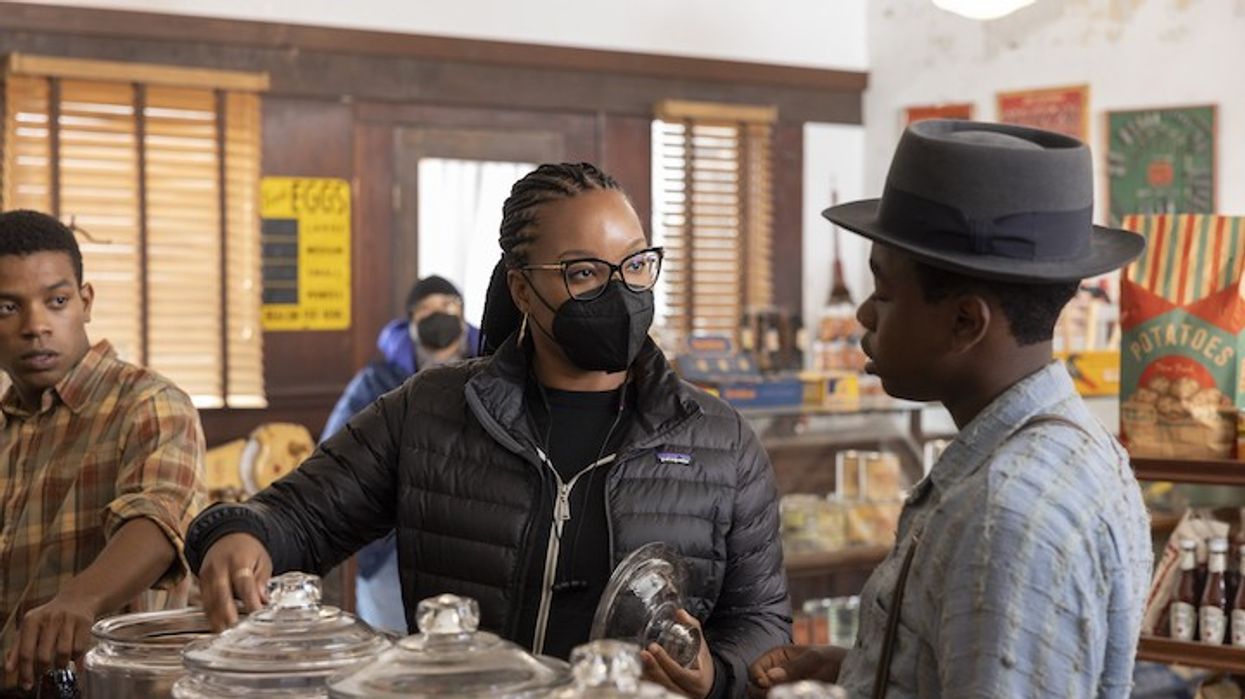Why Did 2022 Fail to Represent More Women Behind the Camera?
2022 showed us that there were not many improvements in women's representation in Hollywood.

There were a lot of changes in 2022. While some of them were good, there were a lot of moments that showcased a collective regression in the industry. The Center for the Study of Women in Television and Film at San Diego State University has released its 2022 “Celluloid Ceiling” report, which examines women's employment in key behind-the-scenes roles in the 100 and 250 top-grossing films at the domestic box office.
Women represented 10 of the 111 directors working on the 100 highest domestic-grossing films in 2022, with only three women of color – Gina Prince-Bythewood, Kasi Lemmons, and Chinonye Chukwu – included.
According to SDSU’s report, the percentage of women directors has dropped from 12% in 2021 to 11% in 2022.
You can read the full report here, but let’s go through some other highlights.

Let's Get to the Numbers
Across all of Hollywood, women comprise 24% of all directors, writers, producers, executive producers, editors, and cinematographers working on the top 250 grossing films of 2022. This is a slight decline from last year’s 25%. The percentage of women working on the top 100 films increased by one percentage point from 21% to 22%.
The study has been issued for two decades and is overseen by the center’s director Dr. Martha Lauzen, who said in a statement, “Five years after #MeToo exploded and two years following the murder of George Floyd, Hollywood has evidenced little change for women and underrepresented directors — particularly women of color.”
“We’d like to see not only the tradition change but also the hiring practices that continue to marginalize women and people of color as directors,” she said.
The majority (67%) of the top 250 films in 2022 employed zero to four women in the roles considered. For comparison, only 5% of these films employed zero to four men in the roles considered, meaning that men held the majority of behind-the-scenes roles.
Films directed by women tend to hire more women in key behind-the-scenes roles. However, there is still a staggering difference in roles held by women compared to those held by men.
Let's break down what percentage of women made up each key behind-the-scenes role in the top 250 films of the year.
Women in the Top 250 Films of 2022
Writers (19%)
Directors (18%)
Editors (21%)
Executive Producers (25%)
Cinematographers (7%)

In comparison to the previous two years, not much has changed. While almost every role has lost one percentage point from 2021, there are still more women being represented in roles than ever before. While this is something to celebrate, we have to look at the facts and realize that women are still heavily underrepresented, making up less than a quarter of all jobs in the industry.
The total number of women helming a top 100 movie—10 of 111 directors—is small enough to name all of them: Olivia Newman (Where the Crawdads Sing), Gina Prince-Bythewood (The Woman King), Olivia Wilde (Don’t Worry Darling), Jessica M. Thompson (The Invitation), Kat Coiro (Marry Me), Rosalind Ross (Father Stu), Halina Reijn (Bodies Bodies Bodies), Kasi Lemmons (Whitney Houston: I Wanna Dance with Somebody), Chinonye Chukwu (Till) and Maria Schrader (She Said).
Women are still dramatically underrepresented in many roles throughout the industry. Since the founding of the Celluloid Ceiling report in 1998, the representation of women in the industry has only increased by 7%.
It can be easy to become distracted by the incremental movement of the numbers from year to year, but women have and continue to make up less than a quarter of directors on the biggest films of the year. We must find a way to make substantial changes to the hiring process to allow more women and people of color an opportunity to step into these important roles.
We can change this in 2023 if we band together to make hiring practices fair and equitable.
Let us know what you think about this year’s Celluloid Ceiling report in the comments below.
Source: The Center for the Study of Women in Television and Film at San Diego State University











